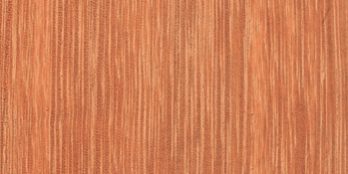Kempas Wood: Durable Timber for Heavy-Duty Construction
**Introduction**
Kempas Wood, scientifically known as *Koompassia malaccensis* (Leguminosae), is a notable timber from Malaysia. Locally, it is called “impas” in Sabah and “menggris” in Sarawak. This timber is recognized for its distinct appearance: the sapwood is white or pale yellow and sharply contrasts the heartwood, which transitions from pinkish when fresh to a deep orange-red or brown as it ages.
Internationally, it is also known by various names such as Kempas Wood (Brunei), Hampas, Impas, Keranji, Mengeris, Mengris, Pah, and Upil (Indonesia), Koompassia (Papua New Guinea), and Makupa, Sifai, and Tong-bueng (Thailand).
**Density**
Kempas Wood is classified as a Medium Hardwood with a density of 770-1,120 kg/m³ when air-dried. Notably, timber from Sabah and Sarawak tends to be denser than that from Peninsular Malaysia.
**Natural Durability**
In standard graveyard tests with untreated specimens measuring 51 mm x 51 mm x 610 mm, Kempas Wood is considered moderately durable in Malaysian conditions. At the Forest Research Institute Malaysia (FRIM), untreated specimens had an average service life of 2.5 years. The sapwood is highly susceptible to powder-post beetles and fungi, and the heartwood is prone to termite damage. However, when treated with wood preservatives, Kempas Wood becomes very durable even under exposed conditions. In an experiment, 25% of 40 treated test sticks were still intact after 35 years.
**Preservative Treatment**
Kempas Wood is easily treatable with preservatives, making it highly suitable for various applications where durability is essential.
**Texture**
The texture of Kempas Wood is rather coarse but even, except where included phloem occurs. The grain is interlocked, often very interlocked.
**Strength Properties**
Kempas Wood falls into Strength Group A (Engku, 1988b) or SG 2 (MS 544: Part 2: 2001).
**Strength Properties of Kempas Wood**
| Test Condition | Modulus of Elasticity (MPa) | Modulus of Rupture (MPa) | Compression Parallel to Grain (MPa) | Compression Perpendicular to Grain (MPa) | Shear Strength (MPa) |
|—————-|—————————–|—————————|————————————-|——————————————|———————–|
| Green | 16,600 | 100 | 55 | 6 | 10 |
| Air dry | 18,600 | 122 | 66 | 8 | 12 |
**Machining Properties**
Kempas Wood is slightly difficult to resaw and easy to cross-cut when green but becomes difficult to resaw and slightly difficult to cross-cut when dried. Planing is generally easy, producing surfaces that range from smooth to rough.
**Machining Properties of Kempas**
| Test Condition | Sawing | Planing | Boring | Turning | Re-sawing | Cross Cutting | Ease of Planing | Quality of Finish | Ease of Boring | Quality of Finish | Ease of Turning | Quality of Finish |
|—————-|——————|——————|—————-|—————–|—————–|—————–|—————–|———————|—————-|———————|—————-|———————|
| Green | Slightly difficult | Easy | Easy | Smooth to rough | Easy | Rough to slightly ragged | – | – | – | – | – | – |
| Air dry | Difficult | Slightly difficult | Easy | Smooth | Slightly difficult | Rough | Slightly difficult | Rough | – | – | Slightly difficult | Rough |
**Nailing Property**
The nailing property of Kempas timber is rated as poor.
**Air Drying**
The Wood seasons fairly slowly with minimal defects, except for insect attacks in the sapwood. Thirteen mm thick boards take about 2 months to air dry, while 38 mm thick boards take 4 to 6 months.
**Kiln-Drying**
Kiln Schedule E is recommended for Kempas Wood. Twenty-five mm thick boards take approximately 8 days to kiln-dry. Degrade mainly occurs as spring, although surface-checking and end-splitting may also occur in thicker specimens, particularly where included phloem is present.
**Kiln Schedule E**
| Moisture Content (%) | Temperature (Dry Bulb) | Temperature (Wet Bulb) | Relative Humidity (%) (approx.) |
|———————-|————————|————————|——————————–|
| Green | 120 °F (48.5 °C) | 115 °F (46.0 °C) | 85 |
| 60 | 120 °F (48.5 °C) | 113 °F (45.0 °C) | 80 |
| 40 | 125 °F (51.5 °C) | 116 °F (46.5 °C) | 75 |
| 30 | 130 °F (54.5 °C) | 117 °F (47.0 °C) | 65 |
| 25 | 140 °F (60.0 °C) | 120 °F (49.0 °C) | 55 |
| 20 | 155 °F (68.0 °C) | 127 °F (53.0 °C) | 45 |
| 15 | 170 °F (76.5 °C) | 136 °F (58.0 °C) | 40 |
**Shrinkage**
Kempas Wood exhibits high shrinkage, with radial shrinkage averaging 2% and tangential shrinkage averaging 3%.
**Defects**
Kempas Wood logs are generally free from defects when freshly felled, though some borer damage has been recorded. The main defect associated with Kempas is the presence of included phloem, which appears as conspicuous rings on cross-sections and bands or patches on radial surfaces. These zones of abnormal tissue can lead to seasoning degrade and mechanical weakness.
**Uses**
When treated with preservatives, Kempas Wood is suitable for all heavy construction works, including posts, beams, joists, rafters, piling, columns, fender supports, pallets, door and window frames, tool handles, bridges, wharves, marine construction, railway sleepers, and telegraphic and power transmission posts and cross arms. Untreated timber is suitable for structures under cover, flooring, panelling, mouldings, vehicle bodies, plywood, and charcoal manufacture.
Kempas Wood is a robust and versatile timber, ideal for demanding construction projects and high-traffic applications. Explore its potential for your construction needs at Creatimber, where quality timber meets expert craftsmanship.






